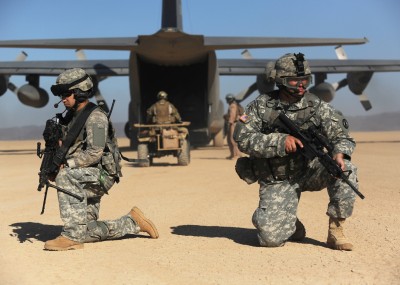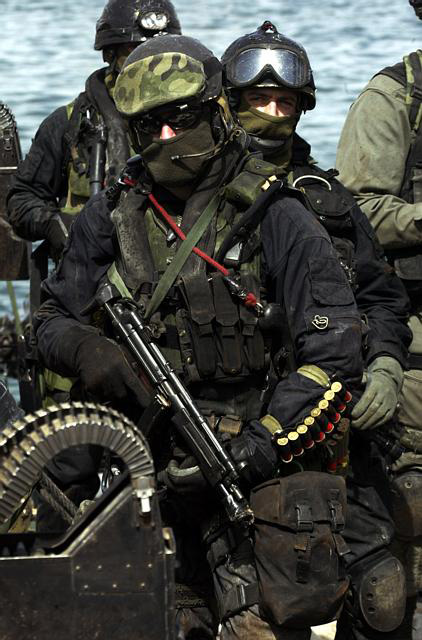Getting bogged down in Libya? A look back at some past military operations

(BRUSSELS2) To assess the effectiveness of the campaign conducted in Libya by the coalition and NATO, it is interesting to refer to a few large-scale operations over the past twenty years.
The analysis is deliberately succinct to allow comparison. But we immediately perceive some elements, in terms of preparation and means committed (to simplify, I call "rebel" forces those who do not have power). If the offensive was sometimes "rapid", it did not last a few days but several weeks, and often after intense preparation. The only exception: Afghanistan in 2003, but with a very specific situation. Before drawing up a balance sheet and talking about stagnation, we must therefore wait a few weeks - about 3 months -. And, in a way, the Libyan campaign combines the drawbacks of the Croatian campaign of 1993-1995 (by its absence of ground engagement), of Afghanistan 2001 (by the absence of preparation time and the importance territory) than the advantages of Iraq 2003 (long preparation + massive ground engagement).
Iraq - 1990. Operation "Desert Storm" (Desert Storm) is unleashed against Iraq six months after the first ultimatums asking Saddam Hussein to withdraw his troops from Kuwait. Between August 1990 and January 1991, this gave the General Staff time to refine their plans. The Americans massed, on the ground, 200.000 soldiers, a thousand planes, 700 tanks and 80 boats. The operation itself takes about 7 weeks. But that is without taking into account the Kurdish crisis which will then last for several years. Then began, in the north, the operations Provide Comfort until 1997 then Northern Watch and, to the south, Southern Watch (no fly zone) on Shiite areas. Duration: preparation = 6 months, operation = 7 weeks. Elements: significant air component, massive direct ground engagement.
Croatia - 1995. This offensive is often cited as the very example of a victorious and rapid counter-offensive. This is to forget that it was preceded by a notable preparation. Faced with the Yugoslav-Serb army, which inherited the structures of the federal army, the Croatian army is in the making. However, it has an operational embryo (the Croats of the federal army, the militia), then logistical aid, in equipment and in "external" trainers which will increase. The first thrusts began in January 1993 to open up the Dalmatian coast, in September 1993 to clear the suburbs of Gospic, to end in May 1995 with the Lightning offensive on Western Slavonia and in August 1995, in Krajina. The Dayton Peace Accords were signed in November 1995. Duration: 2 years of preparation of an army and 4 months separating the two victorious offensives which actually lasted a few days. Elements: occasional air component, support and training of "rebel" forces on the ground, no direct ground engagement.
Kosovo - 1999. Between March and June 1999, the Serbian government yielded and withdrew from "its" province of Kosovo after 78 days of bombardment. A power worn down (and trained) by 8 years of almost uninterrupted war in Croatia and Bosnia essentially. While the "Kosovo Liberation Army" (UCK), embryonic at the start, began to strike a few blows two years ago and gradually expanded. A vigorous Serbian offensive took place between May and August 1998. And NATO, which issued its first ultimatums in October 1998, benefited (as in Iraq) from several months to prepare action plans (not to mention the presence of international forces since several years in neighboring countries (Bosnia and Fyrom/Macedonia in particular) Duration: 6 months of planning, 11 weeks of air operations + land campaign Elements: support and training of "rebel" elements + discreet ground presence, significant air, subsequent ground engagement.
Afghanistan - 2001. Triggered on October 7, 2001, with minimal preparation time after the attacks of September 11, the operations are proceeding quickly. After the landing of special forces (duly endowed with $70 million will be spent in particular to "remunerate" certain "rebel" forces), followed by the "reconquest" of the country carried out in good part by the "rebel" forces. Kabul is taken in mid-November, Kandahar in early December and Tora Bora (in the east) in mid-December. Duration: preparation 3 weeks, action: 10 weeks. However, the coalition has "rebel" forces on the ground that have already been organized, formed and trained in warfare for years. Opposite, the Taliban have some forces but rather reduced artillery. Elements: progressive land engagement (special forces), support for "rebel" forces, targeted air component. The stabilization phase is still ongoing and should end in 2014.
Iraq - 2003. Triggered on March 20, won in some 20 days on the ground, officially ended on May 1 (6 weeks), the campaign had been preceded by intense preparation. Started in November 2001, after the attacks of 11/9, planning intensified throughout 2002, when several plans (Polo Step) were developed. It was also synonymous with a strong ground commitment by the Americans and their allies (about 100.000 men). Duration: planning/preparation = 1 year and 6 months, operation = 20 days. Elements: massive air component, massive direct land engagement. The stabilization phase has been completed since August 2010.
Read also:
